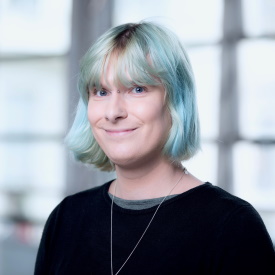The Royal Society Diversity Committees' Dr Luke Boulter-Comer discusses LGBT+ inclusion in STEM.
24 May 2018 marks 30 years since the enactment of Section 28 and its inclusion into British law.
At the time of writing this blog post, I am 31 and my entire school life was spent under the shadow of Section 28, which stated that a local authority “shall not intentionally promote homosexuality or publish material with the intention of promoting homosexuality” or “promote the teaching in any maintained school of the acceptability of homosexuality as a pretended family relationship”.
Thankfully, Section 28 was repealed in English law in 2003.
Enacting laws that limited our ability to self-identify or discuss diverse identities led to self-censorship within the LGBT+ community. With the exception of a small handful of industries, LGBT+ people struggled to have a voice and this enforced silence meant a generation of industrialists, business leaders, scientists, manufacturers, teachers and tradespeople – people at all points in society, had few LGBT+ role models to look up to, few LGBT+ people to be inspired by and few icons in which they could find comfort when they felt marginalized. The LGBT community felt that doors were closed to them and their options and careers limited by being “found out”.
This is not unique to the LGBT+ community; this is the plight of most minorities, who are pushed to the fringes of their society.
Equality, however, is a journey and the UK has made terrific progress in recent years to correct some of the injustice that the LGBT+ community has endured. Science too has seen a change in pace when it comes to diversity and inclusion and ground-breaking initiatives to address the gender imbalance in science, such as Athena SWAN, have moved equality and diversity into sharp, scientific focus.
As often is the case, gender equality proponents have forged a clear path that LGBT+ people in STEM can follow. This has lead to wonderful initiatives such as Pride in STEM and the LGBT STEMinar where the LGBT+ community can be outward facing and celebrate their achievements, not only because they are proud LGBT+ individuals, but because they are also proud scientists and every day contribute to how we understand our universe.
There is still a way to go. I am occasionally asked, “when did you come out?” The answer is – each time I meet someone new, and, while normally it’s all fine, sometimes it’s not.
I’m a scientist and it is my job to meet new people and disseminate the discoveries my team makes. Only by working inclusively do we progress more quickly, make stronger collaborations and have more fun. Bias, unconscious or otherwise, does of course exist within the scientific community, and whilst we often see ourselves as treading a liberal and enlightened path, we need to be cautious of complacency. A recent tweet by David Ottenheimer highlighted this and spawned the #LGBTScience hashtag, mobilizing LGBT+ academics at all levels to give glimpses into their journeys and stories.
LGBT+ inclusion in STEM is still relatively young and it needs to be visible. The Royal Society is contributing to inspiring change in science. Over LGBT History month in February the Royal Society will be tweeting about inspiring scientists who are also LGBT+.
I hope that this initiative says loudly, if you are LGBT+, you are welcome in science; the doors are open, so get in here and be inspired.






